Let's decode and make you knowledgeable about your prescription
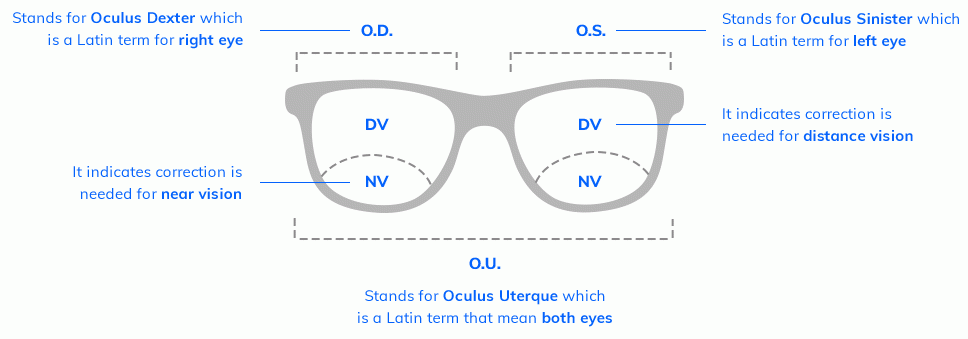
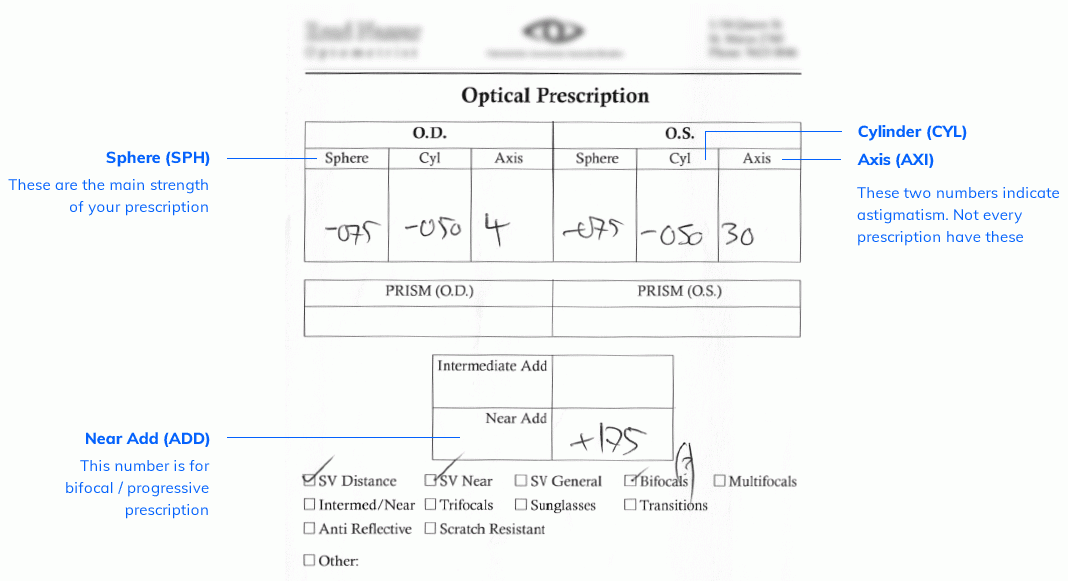
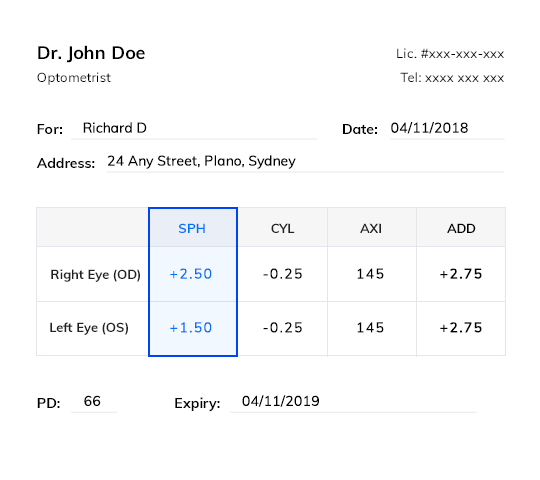
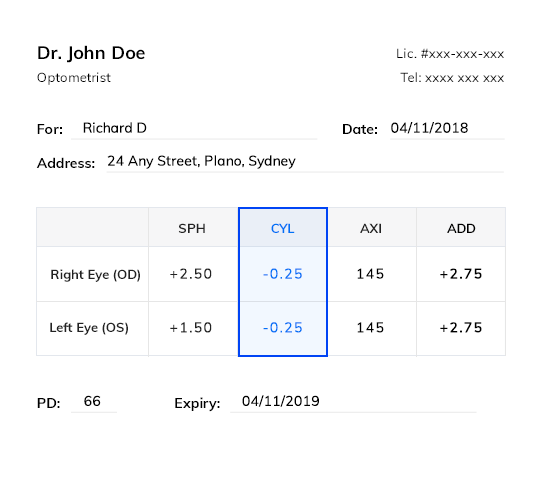
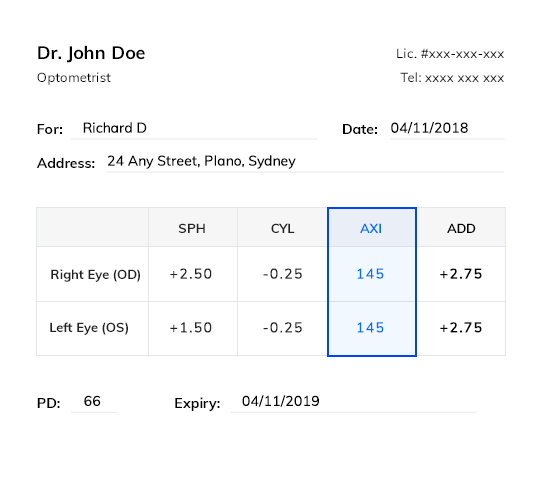
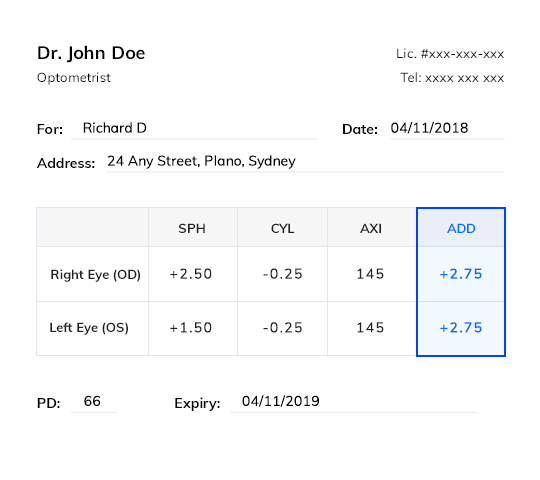
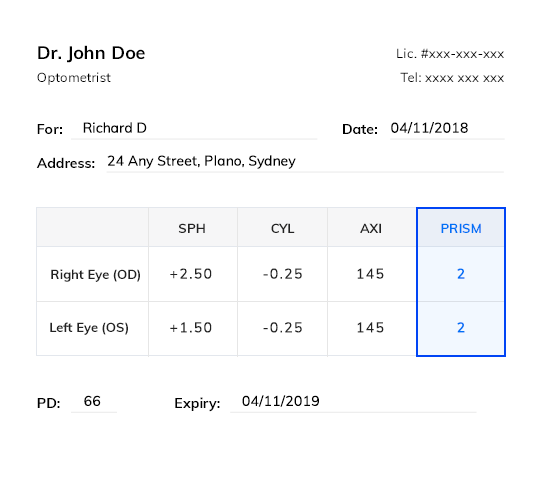
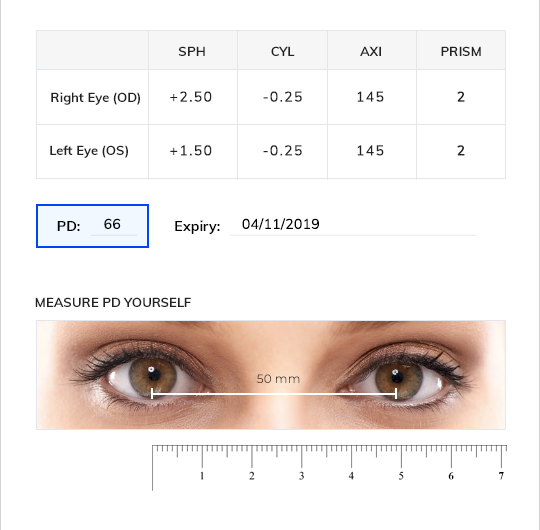
SPH stands for Sphere which indicates the lens power, prescribed for correcting nearsightedness and farsightedness. It is calculated in dioptre (D).
CYL stands for Cylinder which indicates the amount of lens power to correct astigmatism (difficulty to focus due to irregular shape of cornea). If there is no number in this section then it means there is no astigmatism. Even here the number is preceded with + or - sign. If the CYL number is in negative (-), it means you have nearsighted astigmatism while if the CYL number is in positive (+), it means you have farsighted astigmatism.
AXI stands for Axis which is direction of the astigmatism, calculated in degree. It points the position of astigmatism. The value is only present in this section if you have CYL number. The axis number ranges between 1 and 180. Number with 90 relates to vertical meridian and number with 180 corresponds to horizontal meridian of the eye.
ADD stands for Addition which is the additional correction needed for clear reading purpose. This is usually mentioned when bifocal or varifocal lens is prescribed. It is to correct presbyopia. The number in this section is always preceded with a (+) sign.
If both of your eyes don't perform well together then prism is prescribed. Prism is usually recommended to correct particular type of eye disorders like squint, double vision or positional correction. Very less eye prescriptions include prism. You can also see some abbreviations with prism which indicate base directions or thickest edge; it includes BU - Base Up, BD - Base Down, BI - Base In (towards nose of the wearer) and BO - Base Out (towards ear of the wearer).
Sometimes your prescription may also contain PD which indicates the pupillary distance. It is the distance from the centre of one pupil of the eye to the centre of the pupil of another eye. It is measured in millimetres (mm).
Below is the explanation to tell whether it is for a single vision or bifocal / progressive lenses
Single Vision
Single Vision prescriptions are for those who have trouble seeing either near or far (but not both). This prescription has no value in the ADD column.
| SPH | CYL | AXI | ADD | PD | |
|---|---|---|---|---|---|
| Right Eye (OD) | +1.75 | -1.50 | 40 | 60 | |
| Left Eye (OS) | -1.50 |
Bifocal / Progressive Vision
Bifocal prescriptions are for those who have trouble seeing both near and far objects. These prescriptions have value in the ADD column.
| SPH | CYL | AXI | ADD | PD | |
|---|---|---|---|---|---|
| Right Eye (OD) | +0.75 | -1.00 | 120 | +1.75 | 60 |
| Left Eye (OS) | +0.75 | -0.50 | 110 | +1.75 |
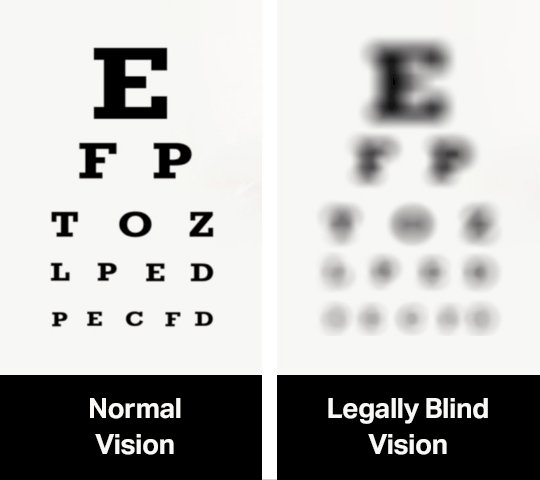
Legally blind was a term coined by government for eligibility of people to special benefits that depends on their vision condition. If your central visual acuity is 20/200 or worse than that is considered to be legally blind. 20/200 patient can see smallest letter at 20 feet which a normal vision person can even see at 200 feet. However, if the vision condition can be made better than 20/200 with the help of glasses or contacts, then the person is not considered to be legally blind.
The definition of legally blind varies from country to country. In countries like Australia and New Zealand, a person is considered to be legally blind, if he cannot see an object at a distance of 6 metres which usually, a normal vision person can see even at a distance of 60 metres.
Our eyeglass prescription and contact lens prescription are not the same. Eyeglass is placed around 12 mm away from the eyes whereas contact lens is directly placed on the eyes, so significantly there's a difference in prescription.
If you are still confused or unsure with your prescription, don't hesitate to contact us.
Shop unlimited collection of designer glasses starting $35.00 only
Confused? Email us now and let us help you understand your prescription.